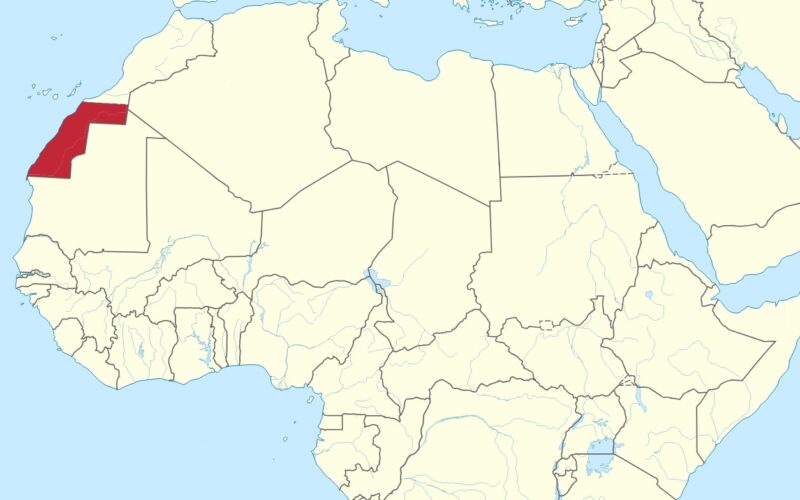Geography

The Saharawi Republic (Geographically known as Western Sahara- Previously Spanish Sahara from 1884 to 1976) includes two main regions: Saguiet el-Hamra in the north and Oued Dahab (Rio de Oro) in the south.
It covers an area of 266 000 square Kilometers, laying between the 20th and 30th parallel straddling the Tropic of Cancer. It is bordered to the north by Morocco, Algeria to the north-east, Mauritania to the south and east and the Atlantic Ocean to the west (1200 Km coastline).

The topography of the territory is mostly made up of plains and some small plateaus that rarely reach 400 meters above sea level. On the whole, the Western Sahara can be divided into two main areas:
1) The Northern area, Saguiet El Hamra, is characterised by rivers that gather in the main river of Western Sahara, the Saguiat el-Hamra (the Red Canal), whose importance lends its name to the region.

Sufficient vegetation for grazing grows along its banks and at Smara (the cultural city of the territory), barley and corn are cultivated. However, the water of the river often evaporates quickly because of the high temperatures in the region.
2) The second zone, the Rio de Oro, is inland and consists of flat plains and sand dunes. The ground is too permeable to retain the autumn waters and too flat to allow it to flow, hence water accumulates in the subsoil forming numerous wells.

The inland landscape is quite monotonous and along the coast this monotony is only broken by the peninsulas of the city of Dajla (ex-Villa Cisneros) and Guera.
Inland, the climate is continental with cold, dry winters while summers are extremely hot with temperatures reaching 60° (in the shade) and the coastal humidity causing fog, mist and dew. Dajla receives a yearly average rainfall of only 45 millimetres.
On the coast, vegetation and flora is abundant due to the humidity. Inland, one finds the typical flora of the steppe and desert; some locusts along the wadis and shrubs in the sandy depressions. To the south, there is little fauna and to the southeast, it is mainly fennecs, antelope and gerbils.

Climate
As suggested by its name, Western Sahara has a hot desert climate. Annual average rainfall is below 50 millimetres (2.0 in) everywhere. Along the Atlantic coast, averages high and low temperatures are constant and moderated throughout the year thanks to cool offshore ocean currents.
Summertime is long and extremely hot and wintertime is short and warm to truly hot further in the interior, where cooling marine influences aren’t felt anymore. Average high temperatures exceed 40 °C (104 °F) in summer during a prolonged period of time but can reach as high as 50 °C (122 °F) or even more in places such as Smara, Tichla, Bir Gandus, Bir Anzarane, Aghouinite, Aousserd and others.







